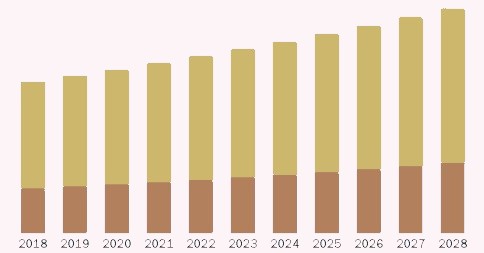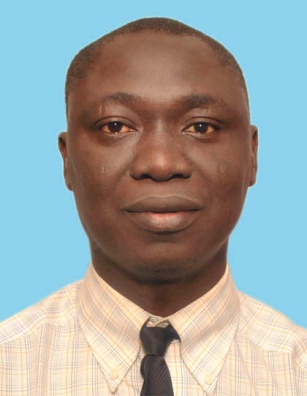Theme: Theme : Changing the World by Exploring Newer and Sustainable Technologies in Physical Chemistry
Euro Physical Chemistry 2022
We proudly announce the conference “8th International Conference on Physical and Theoretical Chemistry” during September 19-20, 2022 at Paris, France with the theme "Changing the World by Exploring Newer and Sustainable Technologies in Physical Chemistry " the conference aim to bring together leading academic scientists, researchers and research scholar to exchange and share their innovative idea, views, trend and concerns as well as practical challenges encountered and solution adopted in the field of physical chemistry and theoretical chemistry.
Euro Physical Chemistry Conference aims at sharing new ideas and new technologies amongst the professionals, industrialists and students from research areas of Physical Chemistry, Theoretical Chemistry, Electrochemistry, Photochemistry, Computational Chemistry, Chemical Engineering and Chemical Physics to share their recent innovations and applications in various fields and indulge in interactive discussions and technical sessions at the event. Physical chemistry is the study of how matter behaves on a molecular and atomic level and how chemical reactions occur. Based on their analyses, physical chemists may develop new theories, such as how complex structures are formed. Physical chemists often work closely with materials scientists to research and develop potential uses for new materials. It’s mainly focused on understanding the physical properties of atoms and molecules, the way chemical reactions work, and what these properties reveal. Their work involves analyzing materials, developing methods to test and characterize the properties of materials, developing theories about these properties, and discovering the potential use of the materials. Using sophisticated instrumentation and equipment has always been an important aspect of physical chemistry.
ConferenceSeries Ltd Organizes 1000+ Global Events Every Year across USA, Europe & Asia with support from 1000 more scientific societies and Publishes 700+ Open access journals which contains over 100000 eminent personalities, reputed scientists as editorial board and organizing committee members. The conference series website will provide you list and details about the conference organize worldwide. Chemistry conferences are gathering of group of people to share their research ideas and knowledge of specific techniques and topics in chemistry field in Chemistry Conferences. Frequently there are more than a few speakers within each conference, and these speakers are experts in chemistry fields. In these Chemistry Meetings several topic reviews are programmed each day throughout the conference, and participants can usually make their choice of topics from among these scheduled international events. To discuss the issues and accomplishments in the field of engineering Conferenceseries International Conferences has taken the initiation to gather the world-class experts both from academic and industry in a common platform at its Chemistry conferences.
Scope and Importance :
Euro Physical Chemistry 2022 undertake to focus on the understanding the physical properties of atoms and molecules, developing theories about these properties and potential use of these material. Within the field of physical chemistry, we can investigate how molecules or atoms combine to form particular molecules. We can also learn about the different properties of matter, such as why a compound burns or about its ability to convert from a liquid to solid substance, and also its mainly focuses on advanced physical chemistry topics include different spectroscopy methods(Raman, ultra-fast and mass spectroscopy, nuclear magnetic and electron Para magnetic resonance, statistical mechanics, x-ray absorption and atomic force microscopy) as well as theoretical and computational tools to provide atomic-level understanding for applications such as: nanodevices for bio-detection and receptors, interfacial chemistry of catalysis and implants, electron and proton transfer, protein function, photosynthesis and airborne particles in the atmosphere. Undoubtedly, this field is very important in the world of science, especially as it paves the way for the discovery of new theories.
Track 1: Physical Chemistry and Macromolecules
Physical Chemistry is the branch of chemistry dealing with the physical properties of chemical substances. It is one of the traditional sub-disciplines of chemistry and is related with the application of the concepts and theories of physics to the study of the chemical properties and reactive behaviour of matter. Unlike other branches, it deals with the principles of physics underlying all chemical interactions (e.g., gas laws), seeking to measure, correlate, and explain the quantitative aspects of reaction. it deals with the principles of physics underlying all chemical interactions (e.g., gas laws), seeking to measure, correlate, and explain the quantitative aspects of reactions.
Track 2: Theoretical and Computational Chemistry
Theoretical and Computational Chemistry is a branch of chemistry that uses computer simulation to assist in solving chemical problems. It uses methods of theoretical chemistry, incorporated into efficient computer programs, to calculate the structures and properties of molecules and solids. Classical approximations to the potential energy surface are used, as they are computationally less intensive than electronic calculations, to enable longer simulations of molecular dynamics and Structural Chemistry. Furthermore, cheminformatics uses even more empirical (and computationally cheaper) methods like machine learning such as Artificial Intelligence based on physicochemical properties. One typical problem in cheminformatics is to predict the binding affinity of drug molecules to a given target.
Track 3: Chemical Kinetics and Reaction Engineering
Chemical Reaction Engineering (reaction engineering or reactor engineering) is a specialty in chemical engineering or industrial chemistry dealing with chemical reactors. Frequently the term relates specifically to catalytic reaction systems where either a homogeneous or heterogeneous catalyst is present in the reactor. Chemical reaction engineering aims at studying and optimizing chemical reactions to define the best reactor design. Hence, the interactions of flow phenomena, mass transfer, heat transfer, and reaction kinetics are of prime importance to relate reactor performance to feed composition and operating conditions.
Track 4: Quantum Chemistry and Faraday Discussions
The quantum Chemistry and Faraday Discussions of small molecules provide the basis for our quantitative understanding of chemistry and a testing ground for new theories of molecular structure and reactivity. With modern methods, small molecular systems can be investigated in extraordinary detail by high-resolution spectroscopic techniques in the frequency or the time domains, and by complementary theoretical and computational advances. This combination of cutting-edge approaches provides rigorous tests of our understanding of quantum phenomena in chemistry. The chemical properties of small molecules continue to present rich challenges at the chemistry/physics interface since these molecules exhibit properties in isolation and interact with their environments.
Track 5: Solution and Thermodynamics
Solution Thermodynamics is the study of the interrelation of heat and work with chemical reactions or with physical changes of state within the confines of the laws of thermodynamics. Chemical thermodynamics involves not only laboratory measurements of various thermodynamic properties, but also the application of mathematical methods to the study of chemical questions and the spontaneity of processes.
Track 6: Electro-Chemistry and Electro-Analytical Chemistry
Electrochemistry is the study of chemical processes that cause electrons to move. This movement of electrons is called electricity, which can be generated by movements of electrons from one element to another in a reaction known as an oxidation-reduction ("redox") reaction. Electrochemistry is the branch of physical chemistry that studies the relationship between electricity, as a measurable and quantitative phenomenon, and identifiable chemical change, with either electricity considered an outcome of a chemical change or vice versa
Track 7: Spectroscopy and Analytical Techniques
Spectroscopy is the study of the interaction between matter and electromagnetic radiation. Historically, spectroscopy originated through the study of visible light dispersed according to its wavelength, by a prism. Spectroscopy represents a general methodological approach, while the methods can vary with respect to the species analysed (such as atomic or molecular spectroscopy), the region of the electromagnetic spectrum, and the type of monitored radiation-matter interaction (such as emission, absorption, or diffraction.
Track 8: Solid State Chemistry
Solid-State Chemistry, also called materials chemistry is the study of the synthesis, structure, and properties of solid phase materials. It focuses on non-molecular solids. It has much in common with solid-state-physics, mineralogy, crystallography, ceramics, metallurgy, thermodynamics, materials science and electronics. It focuses on the synthesis of new materials and their characterization. Solids are the chemical substances which are characterised by define shape and volume, rigidity, high density, low compressibility. The constituent particles (atoms, molecules or ions) are closely packed and held together by strong interparticle forces.
Track 9: Coordination Chemistry
Coordination Chemistry is the study of compounds that have a central atom (often metallic) surrounded by molecules or anions, known as ligands. The ligands are attached to the central atom by dative bonds, also known as coordinate bonds, in which both electrons in the bond are supplied by the same atom on the ligand. Coordination compounds are complexes that consist of one or more central atoms or ions with one or more attached molecules. The central atom is called a metal and is a Lewis Acid. Coordination compounds include such substances as vitamin B12, haemoglobin, and chlorophyll, dyes and pigments, and catalysts used in preparing organic substances. A major application of coordination compounds is their use as catalysts, which serve to alter the rate of chemical reactions.
Track 10: Green Chemistry and Catalysis
Green Chemistry, also called sustainable chemistry, is an area of chemistry and chemical engineering focused on the designing of products and processes that minimize the use and generation of hazardous substances. Green chemistry emerged from a variety of existing ideas and research efforts such as atom economy and catalysis in the context of increasing attention to problems of chemical pollution and resource depletion. Solvents are consumed in large quantities in many chemical syntheses as well as for cleaning and degreasing.
Track 11: Organic-Inorganic Chemistry
Inorganic Chemistry is concerned with the properties and behaviour of inorganic compounds, which include metals, minerals, and organometallic compounds. While Organic Chemistry is defined as the study of carbon-containing compounds and inorganic chemistry is the study of the remaining subset of compounds other than organic compounds, there is overlap between the two fields (such as organometallic compounds, which usually contain a metal or metalloid bonded directly to carbon.
Track 12: Photo Chemistry and Photo Biology
Photochemistry is the branch of chemistry concerned with the chemical effects of light. Generally, this term is used to describe a chemical reaction caused by absorption of ultraviolet (wavelength from 100 to 400 nm), visible light (400 – 750 nm) or infrared radiation (750 – 2500 nm). Photochemical reactions are driven by the number of photons that can activate molecules causing the desired reaction. The large surface area to volume ratio of a microreactor maximizes the illumination, and at the same time allows for efficient cooling, which decreases the thermal side products.
Track 13: Material Science and Engineering
Material Science and Engineering involves the discovery and design of new materials. Many of the most pressing scientific problems humans currently face is due to the limitations of the materials that are available and, as a result, major breakthroughs in materials science are likely to affect the future of technology significantly. Materials scientists lay stress on understanding how the history of a material influences its structure, and thus its properties and performance. All engineered products from airplanes to musical instruments, alternative energy sources related to ecologically-friendly manufacturing processes, medical devices to artificial tissues, computer chips to data storage devices and many more are made from materials.
Track 14: Polymer Chemistry
Polymer Chemistry is a sub-discipline of chemistry that focuses on the chemical synthesis, structure, chemical and physical properties of polymers and macromolecules. Polymers can subdivide into biopolymers and synthetic polymers according to their origin. Each one of these classes of compounds can be subdivided into more specific categories in relationship to their use and properties. Polymer chemists’ study large, complex molecules (polymers) that are built up from many smaller (sometimes repeating) units.
Track 15: Nano-Science and Nano-Technology
Nanoscience is the study of phenomena and manipulation of materials at atomic, molecular and macromolecular scales, where properties differ significantly from those at a larger scale. Nanotechnologies are the design, characterisation, production and application of structures, devices and systems by controlling shape and size at nanometre scale. Nano Materials and Nanoparticle examination is right now a region of serious experimental exploration, because of a wide range of potential applications in biomedical, optical, and electronic fields.
Track 16: Cytotechnology and Forensic Chemistry
Cytotechnology is the microscopic interpretation of cells to detect cancer and other abnormalities. This includes the examination of samples collected from the uterine cervix, lung, gastrointestinal tract or body cavities. The cytotechnologist performs a secondary evaluation and determines whether a specimen is normal or abnormal. Abnormal specimens are referred to a pathologist for final interpretation or medical diagnosis. Forensic chemistry is the application of chemistry and its subfield, forensic toxicology, in a legal setting. A forensic chemist can assist in the identification of unknown materials found at a crime scene. Specialists in this field have a wide array of methods and instruments to help identify unknown substances.
Track 17: Drug Design and Drug Discovery
Drugs play an important role in our world, not only as effective substances for the prevention, diagnosis and treatment of disease, but also to improve “quality of life”; enabling people to live with a disease as appropriate for their social and cultural background. The process of the design/discovery of drugs typically involves understanding the character of targets (e.g. enzyme, cell, tissues, etc) related to the disease, setting-up the concept of drug design, providing lead compounds
Track 18: Pharmacokinetics and Pharmacodynamics
Pharmacokinetics influences the decided route of administration for a specific medication, the amount and frequency of each dose and its dosing intervals. On the other hand, pharmacodynamics is the study of how a medicine acts on a living organism. This includes the pharmacological response and its duration and magnitude observed, relative to the medicine’s concentration at an active site in the organism; i.e. the study of a medicine’s effect and the mechanisms of action.
Track 19: Molecular Medicine and Proteomics Chemistry
Molecular Medicine promotes the understanding of biological mechanism of disease at the cellular and molecular levels for better diagnoses, treatment, and prevention of disease. The molecular medicine perspective emphasizes cellular and molecular phenomena and interventions rather than the previous conceptual and observational focus on patients and their organs. Proteomics plays an important role in medical research and molecular medicine, such as in drug discovery and diagnostics, because of the link between proteins, genes and diseases, and it is the next step in modern biology.
Track 20: Biomass and Green Energy
Biomass is an industry term for getting energy by burning wood, and other organic matter. Burning biomass releases carbon emissions but has been classed as a renewable energy source in the EU and UN legal frameworks, because plant stocks can be replaced with new growth. Forest-based biomass has recently come under fire from several environmental organizations, including Greenpeace and the Natural Resources Défense Council, for the harmful impacts it can have on forests and the climate. Greenpeace recently released a report entitled "Fuelling a Biomes" which outlines their concerns around forest-based biomass.
Track 21: Climate Change and Global Warming
Climate Change refers to a broad range of global phenomena created predominantly by burning fossil fuels, which add heat-trapping gases to Earth’s atmosphere. These phenomena include the increased temperature trends described by global warming, but also encompass changes such as sea level rise; ice mass loss in Greenland, Antarctica, the Arctic and mountain glaciers worldwide; shifts in flower/plant blooming; and extreme weather events
Track 22: Pollution Control and Sustainable Environment
Pollution is the introduction of contaminants into the natural environment that cause adverse change. Pollution can take the form of chemical substances or energy, such as noise, heat or light. Pollutants, the components of pollution, can be either foreign substances/energies or naturally occurring contaminants. Some of the more common soil contaminants are chlorinated hydrocarbons (CFH), heavy metals (such as chromium, cadmium–found in rechargeable batteries, and lead–found in lead paint, aviation fuel and still in some countries, gasoline.
Physical Chemistry's Chemical production in the European Union is expected to barely grow faster than in 2021. In general, the increase in production will remain modest against the backdrop of a sluggish domestic market. We expect competitive pressure on export markets to remain intense, even though the naphtha-based European chemical industry benefits more from low oil prices than the gas-based production in the United States.

In the United States, we expect somewhat faster growth in chemical production, at just under 2%, as new production capacity, which will also be used for export, comes onstream. Overall chemical growth is likely to decelerate somewhat in the emerging markets of Asia, mainly due to the slowdown in China, which will affect the other developing countries in the region. In Japan, we presume a weak overall economic environment and minimal growth in chemical production. In South America, the anticipated end of the recession in Argentina and Brazil will result in slight growth in chemical production in the region.
Conference Highlights
To share your views and research, please click here to register for the Conference.
To Collaborate Scientific Professionals around the World
| Conference Date | September 19-20, 2022 | ||
| Sponsors & Exhibitors |
|
||
| Speaker Opportunity Closed | Day 1 | ||
| Poster Opportunity Closed | Click Here to View | ||
Useful Links
Special Issues
All accepted abstracts will be published in respective Our International Journals.
- Journal of Organic & Inorganic Chemistry
- Journal of Environmental Analytical Chemistry
- Journal of Clinical and Bioanalytical Chemistry
Abstracts will be provided with Digital Object Identifier by




















